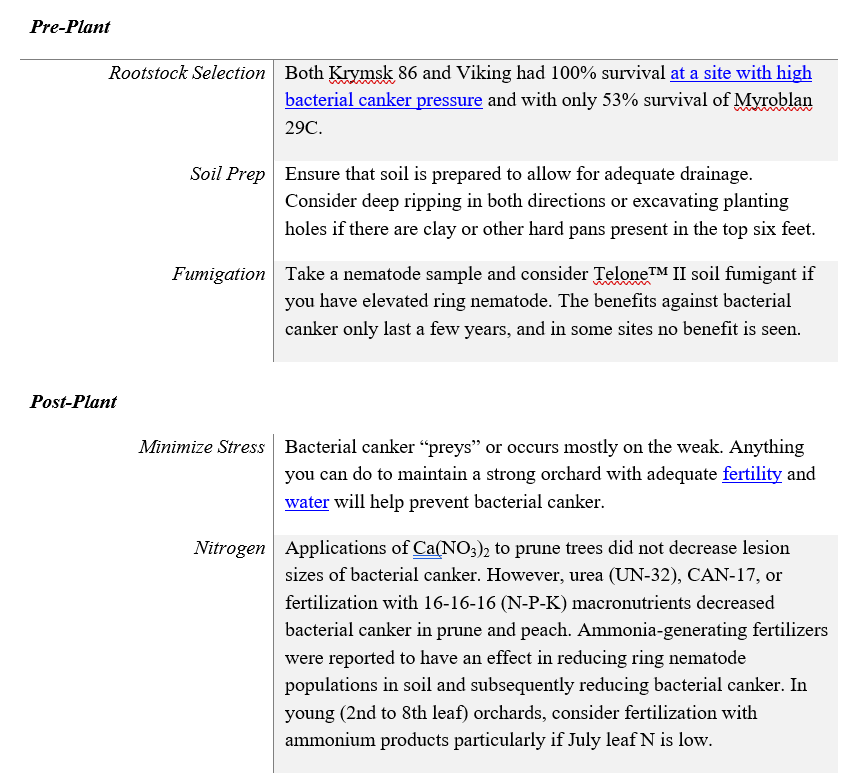Luke Milliron, UCCE Orchard Advisor, Butte, Glenn, and Tehama Counties
Franz Niederholzer, UCCE Orchard Advisor Colusa, and Sutter-Yuba Counties
Left image: Prune orchard with extensive limb dieback from suspected bacterial canker during the spring of 2019. An adjacent orchard that had been treated for nematodes showed no signs of bacterial canker. Right image: Classic mottled damage often associated with bacterial canker infections (photos: Franz Niederholzer).
Every year is a Cytospora canker year, and unfortunately, some years are also bacterial canker years. In the springs of 2019 and 2022 farm advisors observed bacterial canker infections caused by Pseudomonas syringae pv. syringae and closely related species (the same bacteria that causes bacterial blast in almond, prune, and other stone fruits). While Pseudomonas species are ubiquitous across all plant surfaces in all orchards, these bacteria only cause infections and damage under certain environmental conditions depending on the year and the orchard condition. Wet and cold springs are conducive to bacterial canker infections, which can be severe and are often lethal. Bacterial cankers do not continue to spread the following year, but if dead wood is not removed, Cytospora or Botryosphaeria cankers may develop that can contribute to ongoing dieback.
What steps can you take to help prevent bacterial canker?




Leave a Reply